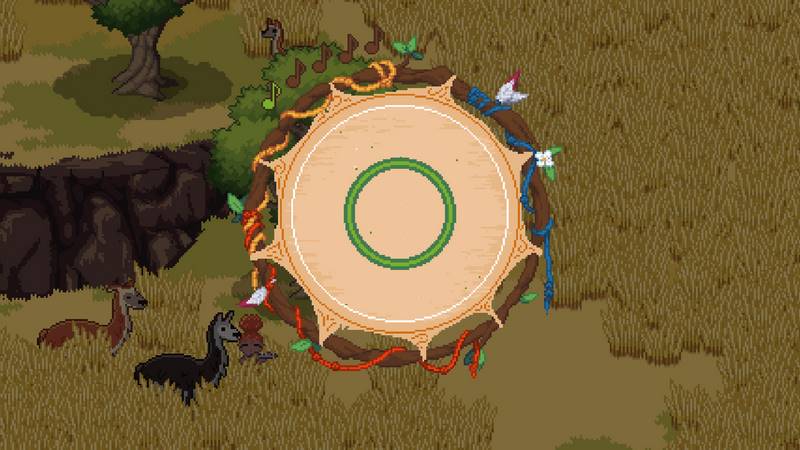
It’s worth noting that the game does have a day and night cycle where the villagers will also go about their daily routines, though not in real-time, which could make Roots of Pacha easier to pick up and play in short bursts. In my demonstration, I built a fire outside, and one of the villagers nearby immediately went over to it and started cooking something. Villagers can also interact with some objects. The current level of customization does include features like changing floors and lights, but isn’t detailed to the level that some players may need. The amount of objects available at the moment isn’t particularly large compared to, say, something like Animal Crossing, but I’m told there are plans to expand this over time. For example, you can customize your house and village, and place furniture and objects everywhere. Most of the action I saw in the game seemed designed with low-key gameplay in mind. The game doesn’t seem particularly interested in exploring the human-to-human violence that existed in that era, so don’t expect any fighting or even hunting (though there is a surprisingly involved fishing minigame, because how could there not be one? ). “We want to balance the stories with the non-romantic because we want to make everyone important in the clan and have that sense of community,” he said. Timo said that this isn’t the main focus of the interactions you’ll have with other characters, but that the option exists for those who want it. In addition to each character having their own unique dialogue, Roots of Pacha also features 10 romance characters for those who enjoy dating and relationships that are often present in life sims. “We have plans to expand it where you can go and visit those other villages – Timo said. Some characters come from other clans in the region, with whom the player will be able to interact and trade as the main story progresses. The game currently features around 40 characters to interact with, around 30 of which can live in your village. Perhaps the biggest surprise for me in this game was how much work seemed to go into creating the characters in the world. “The main character discovers and develops a lot of things, so that’s also where the Ideas system comes from.” This is fiction, but it is based on real facts from the Stone Age,” Timo said. “My favorite book is called The Cave Bear Clan. In other words, there’s a lot more going on in Roots of Pacha than just farming, though Timo has made it clear that the game is less interested in simulating than simply expressing how human society has evolved. They play as quests that can have you exploring nearby areas, scavenging and trading resources, crafting, and more. This is done through what Tim calls an idea system, in which peasants in a player’s clan suggest potential new avenues for innovation. And while agriculture is certainly a part of this – as well as the invention of various pieces of equipment to make it happen – it also includes things like the development of culture, art and even religion as part of a growing society. From this starting point, players will “help their clan develop the ideas that shape humanity” through several eras of history all the way to the Iron Age. The game challenges players to create a clan of villagers at the very beginning of human innovation, when very few tools existed.


.jpg)
It’s important to note that Roots of Pacha’s unique time period seems to play a bigger role in the gameplay than just setting the scene.

During a recent gameplay demo at Summer Game Fest, I spoke with Soda Den co-founder and lead developer Tim Dadoni about what their upcoming game is trying to accomplish. Whenever a new farming themed game hits the market, the big question always comes up: What does this game bring to the table that hasn’t already been done by the behemoth that is Stardew Valley? Often the most obvious difference between games of this genre is the setting and Pacha’s roots – an upcoming farming/village-building game from indie developer Soda Den – stands out by going back in time to the Stone Age.


 0 kommentar(er)
0 kommentar(er)
